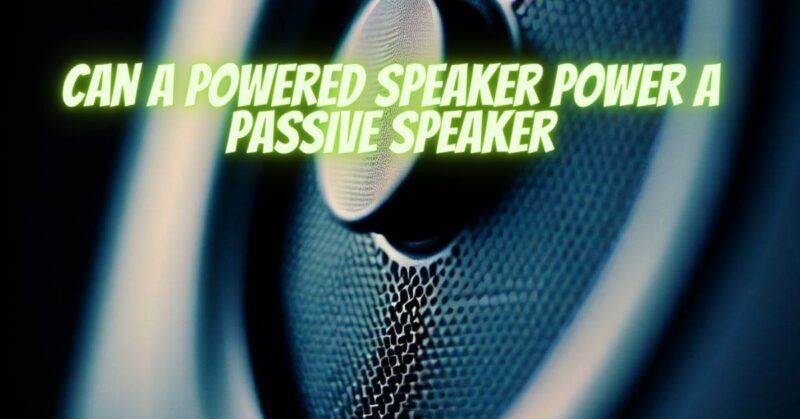Powered speakers, also known as active speakers, are speakers that have built-in amplifiers, allowing them to receive audio signals and produce sound without the need for an external amplifier. On the other hand, passive speakers require external amplification to function. One common question that arises is whether a powered speaker can power a passive speaker. In this article, we will explore the possibilities and considerations surrounding using a powered speaker to power a passive speaker.
Understanding Powered and Passive Speakers:
- Powered Speakers: Powered speakers have a built-in amplifier that is specifically matched to the speaker’s drivers and enclosure. They accept audio signals directly from a source such as a mixer, computer, or audio interface, and produce sound without the need for an external amplifier. Powered speakers are typically self-contained and designed to work optimally within their intended specifications.
- Passive Speakers: Passive speakers do not have a built-in amplifier and require an external amplifier to provide power. They rely on the amplifier to receive audio signals and drive the speakers’ drivers (woofers, tweeters, etc.) to produce sound. Passive speakers are commonly used in various audio setups, ranging from home theater systems to professional sound reinforcement applications.
Can a Powered Speaker Power a Passive Speaker? In most cases, a powered speaker is not designed to power a passive speaker directly. The built-in amplifier in a powered speaker is generally tailored to drive the specific drivers and components within that speaker enclosure. However, there are a few scenarios to consider:
- Line-Level Output: Some powered speakers may feature line-level outputs, allowing you to connect them to other passive speakers. In this setup, the powered speaker acts as a preamp or signal source, and the line-level output sends the audio signal to an external amplifier, which powers the passive speakers. This configuration allows you to combine the convenience of a powered speaker with the scalability of adding passive speakers to the system.
- Powered Subwoofer and Passive Speakers: In certain cases, a powered subwoofer with speaker-level outputs can be used to power passive speakers. The speaker-level outputs of the powered subwoofer are designed to pass a full-range audio signal to additional speakers. However, it is essential to check the specifications and compatibility of the powered subwoofer and passive speakers to ensure proper power matching and impedance compatibility.
Important Considerations:
- Power and Impedance Matching: When connecting a powered speaker to passive speakers or a powered subwoofer, it is crucial to ensure that the power output of the amplifier in the powered speaker matches the power requirements of the passive speakers. Additionally, the impedance of the powered speaker’s outputs should match the impedance of the passive speakers to avoid impedance mismatches and potential damage to the equipment.
- Signal Distribution: Proper signal routing is essential to maintain audio fidelity and prevent signal degradation. Ensure that the audio signal is correctly distributed from the powered speaker to the external amplifier or passive speakers using appropriate cables and connectors.
- System Integration: Consider the compatibility of the powered speaker, external amplifier (if required), and passive speakers to ensure they work harmoniously together. Pay attention to connectivity options, power requirements, and impedance compatibility.
Conclusion:
In general, a powered speaker is not intended to power a passive speaker directly. The built-in amplifier of a powered speaker is designed to drive the specific components within that enclosure, and its power output and impedance may not be suitable for powering external passive speakers. However, by utilizing line-level outputs or powered subwoofer outputs, it may be possible to incorporate passive speakers into your audio setup. Ensure proper power and impedance matching, as well as consider system integration requirements for a successful configuration.

